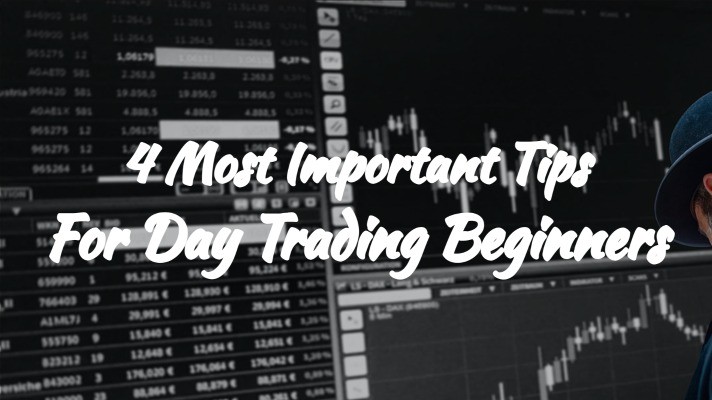Intraday trading, also known as day trading, is a type of investment strategy that involves buying and selling financial instruments within the same trading day. This means that all positions are closed before the end of the market’s trading hours and no overnight positions are held.
One of the main differences between intraday trading and long-term trading is the time horizon. Long-term traders may hold positions for weeks, months, or even years, while intraday traders aim to profit from short-term price movements and close their positions before the end of the trading day.
Benefits to intraday trading
There are several potential benefits to intraday trading, including the ability to take advantage of short-term price movements, the ability to trade with a smaller capital outlay, and the potential to generate income on a daily basis. However, it is important to note that intraday trading also carries certain risks, such as the potential for rapid losses due to high volatility and the need to constantly monitor the market. As with any investment strategy, it is important to carefully consider the potential benefits and risks before entering the market.
Essential skills and strategies for intraday traders
Intraday trading requires a high level of discipline and time management skills in order to be successful. This includes setting specific trading hours, avoiding distractions, and sticking to a pre-determined trading plan.
Technical analysis and chart patterns
Understanding technical analysis and chart patterns is also important for intraday traders. Technical analysis involves using historical price data and various indicators to forecast future price movements, while chart patterns refer to specific patterns that often occur in the price action of a security. By analyzing these factors, traders can make informed decisions about when to enter or exit a trade.
Examples of technical analysis and chart patterns that intraday traders may use include:
- Moving averages: A moving average is a trend-following indicator that calculates the average price of a security over a certain period of time.
- Candlestick patterns: Candlestick patterns are specific formations that often occur on charts and can indicate potential buying or selling opportunities.
- Support and resistance levels: Support and resistance levels are price levels at which a security’s price tends to bounce back from or struggle to break through, respectively.
Trading orders
Setting stop-loss orders and taking profits is another important strategy for intraday traders. A stop-loss order is a type of order that is placed with a broker to sell a security when it reaches a certain price, in order to limit potential losses. Taking profits, on the other hand, involves closing a trade when it reaches a predetermined profit level.
Examples of stop-loss orders and taking profits strategies that intraday traders may use include:
- Setting a stop-loss order at a certain percentage below the entry price to limit potential losses
- Setting a profit target at a certain percentage above the entry price to take profits
- Trailing stop-loss orders, which allow traders to adjust the stop-loss price as the trade moves in their favor
Tools and Software For Day Trading
Traders may also use various trading tools and software, such as trading platforms, charting software, and market data feeds, to help make informed trading decisions. It is important for traders to carefully research and choose the right tools for their needs.
Managing risk and position sizing is another essential skill for intraday traders. This involves setting appropriate stop-loss orders and limiting the amount of capital that is exposed to risk in any given trade. By properly managing risk and position sizing, traders can help protect their capital and increase their chances of long-term success.
Examples of trading tools and software that intraday traders may use include:
- Trading platforms: These are software programs that allow traders to place orders, monitor positions, and analyze market data.
- Charting software: This type of software provides technical analysis tools and charts to help traders analyze price trends and patterns.
- Market data feeds: These provide real-time market quotes and other data, such as news and economic events.
Risk Management Techniques
Managing risk and position sizing is another essential skill for intraday traders. This involves setting appropriate stop-loss orders and limiting the amount of capital that is exposed to risk in any given trade. By properly managing risk and position sizing, traders can help protect their capital and increase their chances of long-term success.
Examples of risk management and position sizing strategies that intraday traders may use include:
- Limiting the amount of capital exposed to risk in any given trade
- Setting stop-loss orders to protect against potential losses
- Diversifying investments to reduce overall risk
- Using position sizing techniques, such as the Kelly Criterion, to determine the appropriate size of a trade based on the level of risk involved.
7 Rules for Picking Stocks When Intraday Trading

There are a number of rules that intraday traders can follow when picking stocks for their trades. Here are a few examples:
Look for stocks with high liquidity and volume
Stocks with high liquidity and volume tend to have more stable prices and are less prone to sudden price swings. This can make them more suitable for intraday trading. There are several ways to identify stocks with high liquidity and volume:
- Check the bid-ask spread: The bid-ask spread is the difference between the highest price a buyer is willing to pay for a stock (the bid price) and the lowest price a seller is willing to accept (the ask price). A narrow bid-ask spread indicates a high level of liquidity, as there are many buyers and sellers actively participating in the market.
- Look at the average daily volume: The average daily volume is the average number of shares of a stock that are traded each day. A high average daily volume indicates that there is a lot of interest in the stock and that it is actively traded.
- Check the market capitalization: The market capitalization of a company is a measure of its size and reflects the total value of all its outstanding shares of stock. Large, well-established companies tend to have higher liquidity and volume, as they are more widely known and have a larger investor base.
- It’s important to note that while high liquidity and volume can be a positive indicator, they are not the only factors to consider when selecting stocks for intraday trading. It is also important to consider the overall market trend, the company’s financial health, and any relevant economic news and events.
Consider the overall market trend
When considering the overall market trend, it is important for intraday traders to pay attention to the direction in which the market as a whole is moving. This can be done by analyzing market indices, such as the S&P 500 or the NASDAQ, or by looking at the performance of a broad range of stocks within a specific sector or industry. There are several ways to identify the market trend, including:
- Using trend-following indicators: Technical indicators, such as moving averages or the Average Directional Index (ADX), can help traders identify the direction of the market trend.
- Analyzing chart patterns: Chart patterns, such as head and shoulders or double tops and bottoms, can provide clues about the direction of the market trend.
- Monitoring market news and economic events: Economic news and events, such as interest rate changes or earnings announcements, can have a significant impact on the market trend.
Use technical analysis and chart patterns
Analyzing chart patterns and using technical indicators can help traders identify potential buying or selling opportunities in a stock.
Keep an eye on economic news and events
Economic events, such as interest rate changes or earnings announcements, can have a significant impact on the price of a stock. Keeping track of these events can help traders make informed decisions about when to enter or exit a trade.
Set stop-loss orders
Setting stop-loss orders can help traders limit their potential losses in the event of a sudden price movement.
Diversify your portfolio
Diversifying your portfolio refers to investing in a variety of different securities, such as stocks, bonds, and commodities, in order to reduce the overall risk of your investment portfolio. This is important because it can help to mitigate the impact of any single position on your portfolio’s overall performance. There are several ways to diversify your portfolio:
- Invest in different asset classes: By investing in different asset classes, such as stocks, bonds, and commodities, you can spread your risk across a wider range of investments.
- Invest in different sectors and industries: By investing in a variety of sectors and industries, you can reduce the risk of being overly exposed to any single industry.
- Invest in both domestic and international securities: Investing in both domestic and international securities can help diversify your portfolio and reduce the risk of being overly reliant on any single market.
- Use asset allocation strategies: Asset allocation involves dividing your portfolio among different asset classes in a way that reflects your risk tolerance and investment objectives. By using asset allocation strategies, you can help ensure that your portfolio is diversified in a way that meets your needs.
It’s important to note that diversification does not guarantee a profit or protect against loss. It is simply a risk management strategy that can help reduce the overall risk of your portfolio. It is still important to carefully consider the potential risks and rewards of any investment before making a decision.
Risk Management Practice
Risk management is the process of identifying, assessing, and controlling potential risks in order to minimize their impact on an investment portfolio. It is an essential skill for any trader, including intraday traders, as it can help protect against potential losses and maximize the chances of long-term success.Here are a few risk management strategies that intraday traders can use:
-
- Set stop-loss orders: A stop-loss order is a type of order that is placed with a broker to sell a security when it reaches a certain price, in order to limit potential losses. By setting appropriate stop-loss orders, traders can help protect against sudden price movements.
- Limit position sizes: Position sizing is the process of determining the appropriate size of a trade based on the level of risk involved. By limiting position sizes, traders can help reduce the overall risk to their portfolio.
- Diversify investments: Diversifying your portfolio by investing in a variety of different securities, such as stocks, bonds, and commodities, can help reduce the risk of any single position having a significant impact on your portfolio’s overall performance.
- Use risk-reward ratios: A risk-reward ratio is a measure of the potential profit versus the potential loss of a trade. By using risk-reward ratios, traders can help ensure that the potential reward of a trade is sufficient to justify the potential risk.
- Keep a trading journal: A trading journal is a record of all of your trades, including the reasons for entering and exiting each trade, as well as any lessons learned. Keeping a trading journal can help traders identify patterns in their trading behavior and improve their risk management strategies.
- By implementing effective risk management strategies, intraday traders can help protect against potential losses and increase their chances of long-term success.
3 Common Mistakes You Must Avoid

Over-trading or over-leveraging: Over-trading refers to taking too many trades, often without proper analysis or a clear plan, while over-leveraging refers to using too much borrowed capital to make trades. Both of these practices can increase risk and lead to significant losses.
Failing to set stop-loss orders:
Stop-loss orders are a crucial risk management tool that can help traders limit potential losses in the event of a sudden price movement. Failing to set stop-loss orders can result in significant losses if the trade does not go as planned.
An example of failing to set stop-loss orders could be a trader who buys a stock at $100, hoping that it will go up in value. However, if the stock starts to decline in value, the trader may be hesitant to sell at a loss and instead holds on to the stock, hoping that it will eventually recover. If the stock continues to decline and the trader fails to set a stop-loss order, they may end up suffering significant losses as the stock continues to drop in value.
On the other hand, if the trader had set a stop-loss order at $95, for example, their position would have been automatically sold at that price, limiting their potential losses to $5 per share. This illustrates the importance of setting stop-loss orders as a risk management strategy in order to protect against potential losses.
Ignoring risk management principles
Proper risk management is essential for successful intraday trading. This includes setting appropriate stop-loss orders, limiting position sizes, and having a clear plan for managing risk. Ignoring these principles can increase the risk of significant losses.
Not keeping a trading journal
A trading journal is a record of all of your trades, including the reasons for entering and exiting each trade, as well as any lessons learned. Keeping a trading journal can help traders identify patterns in their trading behavior and improve their risk management strategies.
The bottom line
Intraday trading can be a challenging but rewarding activity for those who have the necessary skills and discipline. By staying informed, having a clear plan, and avoiding common mistakes, traders can improve their chances of success in this fast-paced environment.
In conclusion, intraday trading involves buying and selling securities within a single trading day, with the goal of making profits from short-term price movements. It can be a challenging but rewarding activity for those who have the necessary skills and discipline.
Some essential skills and strategies that intraday traders may use include time management and discipline, understanding technical analysis and chart patterns, setting stop-loss orders and taking profits, using trading tools and software, and managing risk and position sizing.
However, there are also common mistakes that traders should try to avoid, such as over-trading or over-leveraging, failing to set stop-loss orders, ignoring risk management principles, and not keeping a trading journal.
By staying informed, having a clear plan, and avoiding these common mistakes, traders can improve their chances of success in the fast-paced world of intraday trading.








Amazing many of great facts.
I’m glad you found the information to be informative and useful. If you have any further questions or would like to discuss the topic in more depth, please feel free to leave a comment or reach out to me directly. I appreciate your engagement and feedback on my blog.